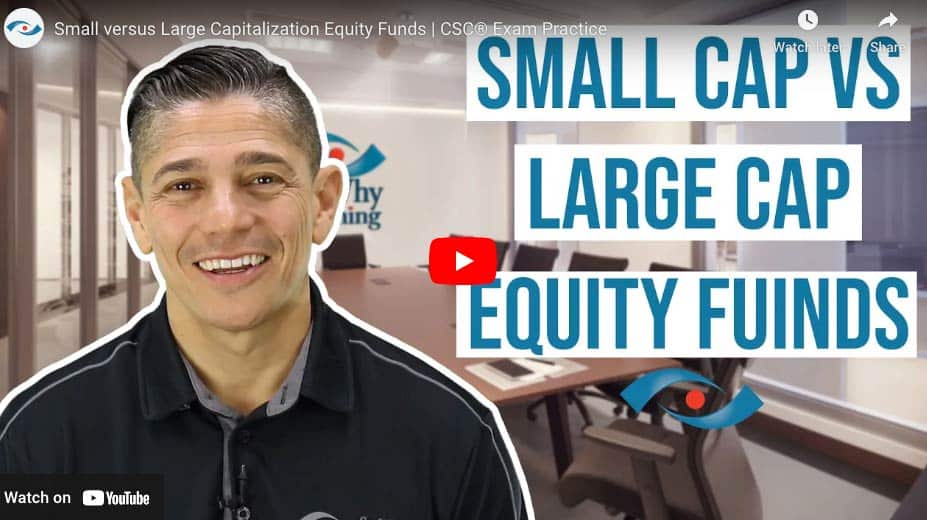Equity funds can be categorized by market capitalization, or “market cap” for short. For example, there are equity funds that invest in small cap stocks while others invest in large cap stocks. Many equity funds in the marketplace refer to market capitalization directly in the fund name, such as “Canadian Large Cap Equity Fund”.
So, what does market capitalization refer to? Well, let’s look at an example.
Example: Michael has learned that in most cases, larger well-established companies like Walmart are generally safer investments than common shares of smaller startup companies. This is because it is extremely unlikely that Walmart will file for bankruptcy tomorrow, whereas with a startup company – who knows?
Market capitalization is calculated as follows.
Market capitalization = Number of common shares outstanding x Share price
So let’s assume that Company “A” has 1,000,000 shares outstanding and its common shares have a market value of $25. Its market capitalization would be $25,000,000. In comparison, Company “B” has 1,000,000 shares outstanding and its common shares trade in the marketplace at $50. So its market capitalization would be $50,000,000.
It may help to think of it this way: If company “A” has a market cap at $25,000,000 and Company “B” has a market cap of $50,000,000, then company “B” makes up a greater portion of the overall stock market.
Finally, what is considered a large cap stock (for example) can vary significantly from country to country. In Canada, $5,000,000,000 is considered a large cap stock, where in the US that descriptor is reserved for companies that have a market capitalization of $10,000,000,000 or more.
Recent Videos

Monetary & Fiscal Policy Part 2

Monetary & Fiscal Policy






